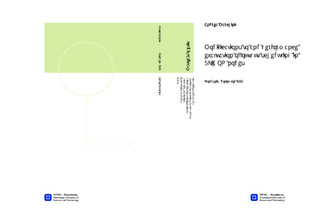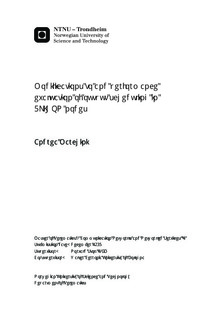| dc.description.abstract | Optical networks became very important in the latest years, thanks totheir high trac capacity, because of the continuous growth of totalexchanged data and the request of real-time communication.Since they have (relatively) long adaptation times, this technology isnot inherently the most suitable to carry bursty traffic like the currentone. Hybrid networks try to get the best from optical circuit switchingand optical packet switching.This work is focused on an hybrid network architecture called 3LIHON (3-Level Integrated Hybrid Optical Network). It has three different quality of service (QoS) levels, in order to meet different requirements:- Guaranteed Service Type (GST): resembling an optical circuitswitched service, it does not allow data loss.- Statistically Multiplexed Real Time (SM/RT): resembling anoptical packet switched service, it ensures none or very smalldelay inside the network, it allows a low data loss ratio andbandwidth contention.- Statistically Multiplexed Best Effort (SM/BE): resembling anoptical packet switched service with very small overall packetloss but no guaranteed delay inside the nodes.In a 3LIHON node, SM/BE traffic interrupted by packets with higherpriority is dropped. This means that time and resources spent sendingthe SM/BE packet until the interruption are wasted.In this work we try to avoid this behaviour, by implementing andcomparing three new output scheduling algorithms. They are differentversions of the standard 3LIHON node:- 3LIHON-RS: SM/BE interrupted packets are resumed oncehigher priority trac has been sent.- 3LIHON-RT: SM/BE interrupted packets are retransmitted.- 3LIHON-2R: since GST packets are usually much longer thanSM/RT ones, resuming an interruption caused by GST trafficleads to a long wait. This architecture resumes SM/BE packetsinterrupted by SM/RT traffic and retransmits them if they havebeen interrupted by GST traffic.A proper (Fragment End) Optical Code can be used to implement andsignal packets interruption and resuming, Every 3LIHON version hasbeen tested with increasing traffic loads, but never so high to overloadthe node. Three different simulators have been written in order tostudy the behaviour of the different architectures, by using the Simula programming language and its context class DEMOS, specificallyintended for discrete event modelling. The node input part has justbeen modelled, since it does not directly influences results.As a function of system load, performances of these new architectureshave been analysed, paying attention especially to SM/BE packetsmean delay, SM/BE queues, delay distribution of SM/BE traffic,wavelengths utilization, GST and SM/RT interruptions over SM/BEtraffic, standard deviation of SM/BE delay and SM/RT packet loss.It has been observed that 3LIHON-2R does not have the best absoluteperformances, but is the best trade off among all the systemsand is very well balanced when system load increases. It is the architectureshowing the lowest mean SM/BE packet delay. 3LIHON-RS proved to have the lowest SM/BE queue values and less interruptions of SM/BE traffic. Furthermore, it has the best wavelengths utilization performances. 3LIHON-RT achieved the worst results and is the first architecture overloading. | nb_NO |

